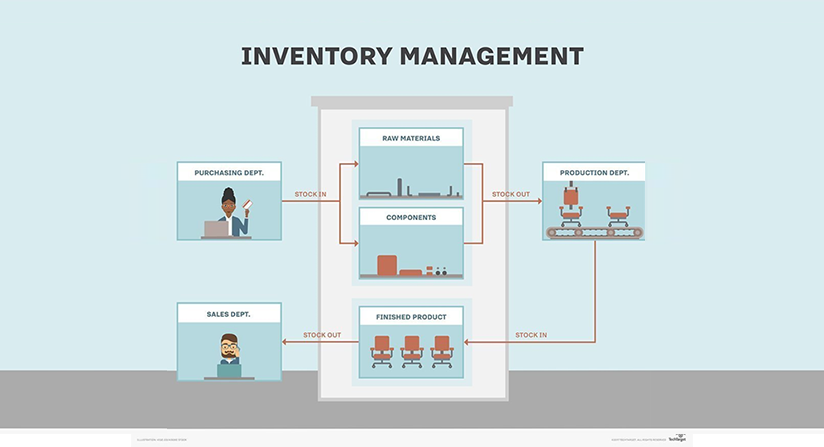Remote monitoring and control of machines are growing, and according to Research and Markets, it should reach $31.7 Billion by 2026, up from $23 Billion in 2020. Companies are adopting remote connectivity for many reasons, including technology that makes it more accessible and less expensive and the need to use it to compete and support a changing workforce.
Gone are the days when manufacturers were dealing with localized and simple issues. Now they are grappling with more complex and global challenges, including supply chain disruptions, scarcity of resources, climate change, and a shifting regulatory environment. To combat these challenges, modern manufacturers are focusing on critical areas, including the sustainable optimization of resources and processes across the supply chain, implementation of circular innovation to meet sustainability demands, and utilization of advanced technologies for the automation of the factory floor and the overall business.
What trends in manufacturing are driving remote connectivity?
1. Direct edge-to-cloud connectivity
Traditional industrial connectivity had software explicitly programmed for hardware embedded within it. Modern industrial connectivity uses hardware that is Linux-based and can run various 3rd party industrial connectivity software applications. Hardware and software are no longer tied together, freeing users from vendor lock-in.
Additionally, industrial connectivity can now be achieved with a single piece of Linux-based hardware, such as an industrial PC or data center with 3rd party software. The functionality in this one device can significantly reduce hardware costs as users no longer have to purchase equipment to perform connectivity functions such as protocol conversion, cloud connectivity, or process control.
2. More vendors provide industrial connectivity products and services
There are now over 340 vendors that provide industrial connectivity technology, including hardware, software, services, and solutions. The more vendors, the tighter the competition, resulting in lower costs. Having more vendors also helps to improve industrial connectivity products. More and smaller companies adopt industrial connectivity with lower-priced technology and improved outcomes.
3. More companies are adopting industrial connectivity
Companies with multiple production sites are most often adopting industrial connectivity. They need to keep tabs on their different systems for a broad view. Without the connectivity, a plant manager would have to call each site to determine equipment status and productivity. Having a live connection, the plant manager has needed information at their fingertips.
More manufacturers are incorporating remote connectivity, even those with single production locations. A significant factor has been the COVID-19 pandemic. Companies wanted to keep production running, but with fewer workers in the plant. More original equipment manufacturers (OEMs) are integrating remote access into their products so they will have better information on how to improve them.
Some firms are hesitant to dip their toe in the water of industrial connectivity because they have intellectual property that serves as a competitive differentiator. They worry someone could gain access to their corporate secrets. Cybersecurity concerns hold many companies back from remote connectivity since it would bring severe consequences if their critical operations were halted. Ransomware, which blocks access to a system until a fee is paid, has caused all sorts of businesses to be wary of remote connectivity.
4. Smaller industrial automation firms are challenging larger ones
As smaller vendors have been producing Linux-based industrial connectivity hardware, more prominent vendors have been hesitant to do so as it could encourage their existing customers to transition, hurting a highly profitable business segment. Some of the vendors leading the way with Linux-based products are building Programmable Logic Controller (PLC) programs that are hardware agnostic, making them compatible with different types of industrial hardware. Others are making open-source software to allow protocol conversion and edge-to-cloud connectivity.
5. New industrial connectivity protocols are emerging
Vendors and end users looking to capture more robust data more efficiently have begun to use emerging protocols, including Input/Output (I/O), Oblivious Transfer (OT), and Internet (IT) protocols. There is a problem with these protocols not having widely adopted data structure standards, but progress is being made in this area. Still, many use custom data structures, so they can still get the data they need.
What are the impacts of remote industrial connectivity?
1. Company culture
Companies adding technology can impact how employees feel about their jobs. They have to be assured that it will benefit them by providing more information to help them accomplish their work. They need to understand that they will not be replaced. Instead, they will be able to take on more meaningful work. It’s essential to effectively communicate what technology is being implemented and how it will help employees and the company.
Businesses must build a culture of innovation and fully leverage their human capital. It’s essential to encourage a culture of engagement and ownership among the workforce that makes them feel accountable. Workers need to understand that the added technology will provide more information faster, which will, in turn, increase performance. Moreover, that robust and accurate data will help them solve problems. With industry connectivity, equipment issues can be dealt with faster, machines are more available to produce, fewer parts are needed, and employees are more engaged. Manufacturers must show that their plant floors are modern, dynamic, technology-driven, challenging, and rewarding.
2. Security
As technology has evolved, so have security issues. Remote connectivity IoT devices that monitor machinery do not require much human interaction, so it may be hard to detect security breaches. It will be necessary for the IT team to implement solid security solutions to guard against any vulnerabilities.
There are more security frameworks available to help companies navigate cybersecurity challenges. Instead of firewalls and other network strategies, intentional redundancies are used at every system layer, down to the device level, to improve security. Machines on the plant floor need security certificates and should only send data using encrypted communications.
3. Integration with legacy systems
There are ways to interconnect old manufacturing machines, existing systems, and your infrastructure to have industrial connectivity. Some solutions allow your legacy IT systems to integrate with manufacturing production machines. Or, if you have older equipment, it can gather critical data into a more modern software system.
It will depend on your particular situation whether you should replace outdated technology, use third-party connectivity solutions to extend the capabilities of legacy equipment, or create an in-house solution. Each has pros and cons, and some may not be feasible due to the company’s size.
New Technology
Pros:
- Improved performance along with more significant energy savings.
- Have the most modern connectivity available that works well with other devices.
- Use equipment suited to your company’s needs to experience greater flexibility.
- Have new machines up and running fast for greater productivity.
- Have increased safety as new machines are designed to meet the latest safety standards.
- Reduce risks and costs. Having newer software and hardware lets you have up-to-date technology that will receive upgrades to keep your business current. It may be costly initially but less expensive in the long run.
- Have greater visibility into operations to better understand your business’s performance.
Cons:
- Cost is always a concern when looking at new hardware and software. It may be the best solution for your company, but it may not be affordable.
- Adding new software or hardware to your business can be time-consuming. Research must be conducted, vendors must be evaluated, and old equipment must be removed. Training is also required for employees to get up to speed on the new machines and software.
Retrofit with Third-Party Solutions
Pros:
- Installing third-party “best-of-breed” solutions to provide connectivity to legacy systems can be done quickly and produce rapid results.
- There are many third-party solutions available to handle all types of criteria.
- There are many experts for these third-party connectivity systems to help install or to manage the entire project.
- Third-party solutions allow you to select only the information you want to receive. And since they are usually modular, you only have to pay for the functionality needed.
- The best-of-breed solutions provide data through a single access point and only require one connection point, even if additional hardware or software is added.
- It costs less to implement since you can continue using your old equipment or software to gain new data.
- Information can be gathered to provide visibility into operations which will benefit all parts of an organization.
Cons:
- Since a great deal of information can be collected, it can consume considerable bandwidth, which becomes costly if you need to increase it. An alternative is edge-based processing, where you only send a summary instead of all the data.
- If you have third-party solutions from multiple vendors, maintenance could be challenging. It’s best to get them all from the same vendor or have a knowledgeable integrator help implement the solutions to have someone you can contact if support is needed.
In-House Solutions
Pros:
- Using an in-house solution can make the system specific to your needs.
- You can start small, show the return on investment, then add more projects.
- In-house solutions can be worked on without disrupting other operations, as opposed to the downtime imposed by installing new hardware or software.
Cons:
- You may not have qualified staff to create a solution that properly utilizes the data collected.
- When an in-house solution is created and successfully used in one area, it may spark interest in projects for other areas. The staff that created the first solution may not know how to develop it to handle other projects.
Lack of Technical Knowledge
No matter how you handle your connectivity needs, it can be challenging to find IT staff that knows how to secure systems and analyze data for business insights and an operations team that knows how to work with the connected systems. It will also be necessary to have controls in place to ensure the manufacturing staff doesn’t make errors that could cause safety, security, or property damage issues. Instead, they should be able to make informed decisions about internal operations, keep the supply chain optimized, and effectively manage assets.
Another concern in terms of knowledge is having someone – whether one of your IT staff or an outside resource – that can integrate the new data with the current data management systems. The data needs to be managed effectively so you don’t put your organization, its assets, or its staff at risk.
Cost
Whichever way you tackle industrial connectivity, costs will be involved – your in-house staff’s time, purchasing new equipment or software, or hiring outside resources. You must determine your objectives, understand your available resources and their limitations, and determine which option provides the best return on investment. These factors will help you choose the right solution.
What are the benefits of remote industrial connectivity?
1. Monitor Machine Performance
When you connect your machines to monitors and begin collecting data, it is used to understand how the equipment performs. Deep insights into these machines allow you to determine when service is needed and schedule it before a problem occurs. As a result, you reduce or eliminate downtime and keep production on schedule. It also lets you accurately quote delivery times by knowing when your machines are available. You’ll also have historical analytics to see how machines perform over time. All of this information lets your shop floor staff make decisions with confidence.
2. Aggregate Data Across Different Machines
Data is gathered from each machine, and then groups of observed aggregates are replaced with summary statistics based on those observations. This information helps answer analytical questions and reduces the time it takes to look at large data sets. The data can be examined quickly as it is aggregated in real-time. You can also look at how machines or their operators perform. The information obtained can help provide instrumental analytics.
3. Standardization of Machine Communication
New standards for the Industrial Internet of Things (IIoT) have helped to establish an architecture that supports faster speeds and more connections. It takes many different data formats, maps them to a standard model, and then sends the data to the cloud for further analysis. Standardization ensures accurate, consistent, and secure data.
4. Eliminate Downtime and Extend Asset Life
In the past, equipment was maintained on a schedule in a preventive manner. But maintenance may be needed sooner or later than it was scheduled. Sensors provide information on how the machines operate to avoid unnecessary service calls. You can move from preventive maintenance to predictive maintenance. The sensors monitor each machine to alert your maintenance team when issues are detected. Having insight into asset health helps to keep them running longer. Productivity also increases by reducing downtime.
5. Keep Tabs on Multiple Production Sites
Industrial connectivity allows companies with multiple production sites to keep tabs on machines at each location. Information is delivered to the correct individuals so they can stay updated on how machines perform at each site without needing to contact local personnel. Keeping all production sites running smoothly helps to ensure that lead times are more accurate for timely deliveries and greater customer experiences.
6. Staff Can Monitor Machine Operations Remotely
Employees these days must be able to work remotely. Connected machines let plant workers keep tabs on their performance using a portable device like a laptop, tablet, or phone. Information is transmitted in real-time. That allows some staff to work remotely, providing greater flexibility for your company. Managers can track production counts, sensor malfunctions, machine status changes, energy status, the average time of stagnation, etc.
When the pandemic hit, it was necessary to have fewer workers on the shop floor. Having connectivity allows the plant to function with fewer workers on site.
7. Enhanced Safety
Having IIoT sensors on machines helps to improve workplace safety since, if there is an accident, everyone can immediately be alerted, and operations can stop until everything is sorted out. Additionally, data about the incident can be reported to help prevent another occurrence. Connected devices decrease the risk of equipment damage, on-site accidents, or worker injuries.
8. Lower Costs
Improved knowledge enabled by machine connectivity reduces costs through better performance, reduced safety issues, and longer machine life. Better insight into what is happening with machines, operations, and production can help management determine the most profitable way forward.
9. Final Thoughts
There are many considerations when it comes to industrial machine connectivity. The best thing to do is to determine your objectives and develop a strategy to achieve those objectives. Connectivity is the future of manufacturing, so it makes sense to integrate your machines with this technology. Your strategy will help you determine the best way to incorporate connectivity into your plant operations so you can begin reaping its many benefits.
Follow Us





